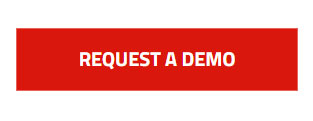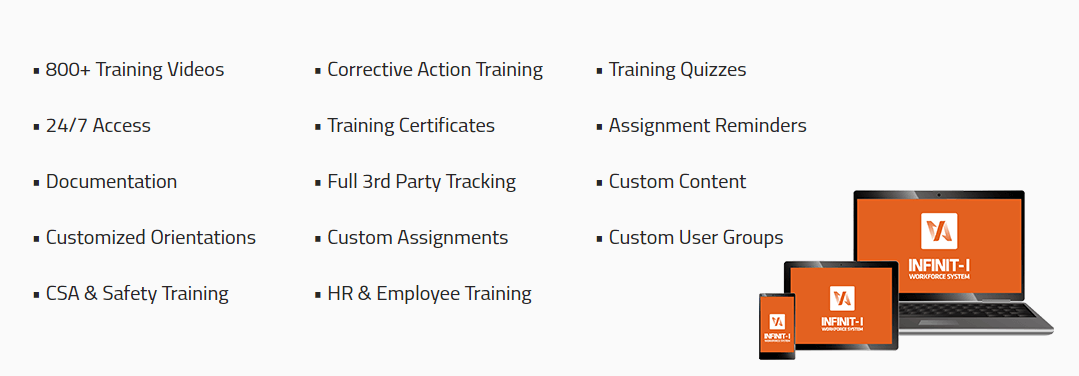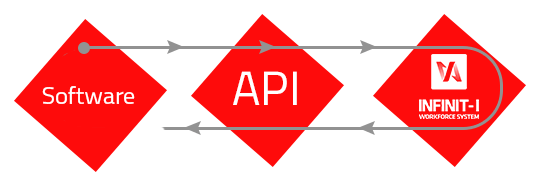Vertical Alliance Group hosts monthly webinars featuring clients who have made significant improvements in safety, compliance, and cost-saving by fully utilizing their Infinit-I Workforce System. The following is a synopsis of an interview with Pat Bode, Director of Safety & Driver Recruitment from Reed Hurst Trucking, Inc. Pat shares how Reed Hurst Trucking transitioned to using online training, how that change has positively impacted their company, and success tips for other Infinit-I clients.
Tina: I am so pleased to interview Pat at Reed Hurst Trucking. Over the last five years, Reed Hurst Trucking has used the Infinit-I Workforce System and integrated it into their safety training program. The Infinit-I Workforce System has more than 800 training videos specific to the trucking industry and HR-specific topics. My first question for Pat is, “Can you share with us just a little bit about your fleet and Reed Hurst Trucking? How many drivers do you guys have?”
Pat: We are a specialized hazmat carrier. We specialize in cryogenics: liquid CO2, liquid natural gas, oxygen, and helium. We have four locations. Our corporate office is in Pocatello, Idaho. We have locations in Utah as well as Cheyenne, Wyoming; Cortez, Colorado; and unmanned satellites in Texas and North Carolina.
We average about 70 to 75 drivers. We’re looking at growing here in the next six months to over 100 drivers. But for the last several years we’ve been averaging right about 70 drivers. About 95% of our company is company drivers. Maybe four drivers are owner-operators. A couple of them outright own their trucks and we a couple are leasing trucks from us.
Tina: Do you require those owner-operators to do the same training that you expect your company drivers to do?
Pat: They’re operating under our DOT authority, so yes. They are required to attend and do all safety training just as a company driver would.
Tina: We talked about your company, what about you?
Pat: I’ve been in transportation over 20 years. Most of those years, I’ve had my hand in some aspect of safety. So, I’ve always believed safety and operations can work together. And that’s how I’ve operated over the last 20 years.
I’m the only guy in our safety “department.” Vertical Alliance is a key part of that working. Their customer service reps are great. I make a single phone call or send an email. I get the information I need, usually within minutes or at worst an hour or two. My rep is always calling saying, “Hey, what do you need me to do?” So, the customer service people have taken a lot off my shoulders in helping manage the program. For those who are already using the system, rely more on your customer service representative.
Tina: So, you’re using the Infinit-I Workforce System, and you rely on your Customer Service Rep. Our reps are there to do a lot of the heavy lifting for you. They want to help you manage your program. We always want our clients to reach out to their reps.
Pat: Definitely. When I first started, they were helping me by answering all my questions. And after a couple of months, I started relying on them more and more. They never say no. They’re always willing to go that extra mile and make sure I have what I want.
Tina: You’ve built an awesome online training program over the last several years, can you walk us through what your training program looked like before you went online?
Pat: Our training program was more of an orientation with the terminal manager. We had quarterly safety meetings, trying to get any required training in. The problem was operations, that’s how we make our money. So, we couldn’t tell the customer “no” and have everybody in the safety meeting. And, we weren’t hitting everybody. And we had to fly people in from the satellite locations. It was a hit or miss process, and it was almost impossible to make sure that everybody had all the required training.
Tina: So, when you started looking for an online training platform, what was your biggest concern?
Pat: Making sure we had the right content and that we were 100% compliant with everybody throughout the company. Compliance was a big concern. What I liked about Vertical Alliance is that they said, “Hey, here are some of our customers. Give them a call and ask them yourself what they think.” That sealed the deal for me.
Tina: You guys do a great job with training. You put a portion of your orientation online, and every driver now goes through that portion of their orientation online. How long was your orientation before that, and how much time is your in-person orientation now?
Pat: Our orientation was running about four and a half days before we could get the driver out in a truck and earning money. Now, while they’re waiting for the results of their drug test, I set them up in Infinit-I for the online training. So now my orientation time is down to about two days. In person, we’re still doing all the DOT file and company policies. And, we go out and teach the Smith System, driving around town for the rest of the afternoon. It’s just the stuff you can’t put online. This system gets them in the truck and earning money a lot faster.
Tina: How have your drivers, your new hires, reacted to taking a portion of the training online?
Pat: A lot of them like it. They’re feeling like they’re getting an exclusive deal. They’re making money sooner. They’re all for that. The faster they can start making an income, that’s what makes them happy.
We don’t pay our new hires for the time they spend in online training before the in-person orientation. It’s a legal issue. They’re not official employees yet. So, that’s helped reduce some of our orientation costs. The benefit to the driver is that, instead of sitting in an orientation in our office getting minimal pay, they get in a truck where they’re making good money faster. The driver gets to get in a truck fast and support their family.
Tina: What do you do for drivers that are not familiar with technology or who do not have a computer?
Pat: Occasionally, yes, we run into that. Some do it at the library. Some sit at a computer in our office. Worst case, we let them know they have to do all the training when they come in.
Tina: I know you’re going through a lengthy review process right now on policies and procedures. Can you walk us through how you’re deciding which policies need to be reviewed and what that process is?
Pat: I’m reviewing all our current policies. One of our challenges is getting policy changes out to all our drivers and making sure to send a list out to the terminal manager. You need to have them sign off that they’ve read and understood the policy. It’s been a two or three-month process.
Now, we’re putting all our policies onto Infinit-I. We send an email out to everybody saying, “Hey, you got a quick safety memo, please read through it and acknowledge that you’ve read it.
We have a record of their name, date, and signature certifying that they are who they are and answering a couple of questions for the knowledge base. It can be pulled up at any time by any of the administrators. It takes a week, not three months.
Tina: You do a lot of custom training. A few years ago, you did training designed to teach your drivers about different technologies in the cab. Can you explain how you came up with the idea to create the training video, what equipment you used, and how the training was viewed by the drivers? Was it beneficial? What was your ultimate feedback?
Pat: I have a video blog that I call “The Safety Corner.” I use a little GoPro camera and my phone video camera. We’ve been running Omnitracs or old Qualcomm since 2012. We’ve been on electronic logs. But a lot of drivers were having problems with navigating a GPS. I just walked people through how I would do it as if I were talking to them on a one-to-basis. My customer service rep got it uploaded to our online system. And, I assigned it to our drivers.
As a safety department of one, I don’t have time to make videos. With Infinit-I, it’s a good mixture. The drivers like the custom content. It’s not a video that they’ve seen over and over. Doesn’t matter what company the driver goes to, he’s going to watch the same video because we all have similar videos. But the custom content is a good way to break up the monotony. Especially when it’s personalized to exactly what they’re doing.
My drivers are acutely aware that every month they’re going to need to log in and take 15 to 30 minutes of training. We tie that into our quarterly safety performance bonus. Drivers must have 95% of their safety training done to receive their bonus.
Tina: So, do you think that safety bonus has helped you with the driver adoption of the online training?
Pat: Not really. I have a great group of guys and gals who are all very safety conscious. If I don’t have monthly training up on time, I get drivers calling saying, “Hey, you putting training up this month? What’s going on? Why are you slacking?” So, the drivers enjoy it. To be eligible for their quarterly bonus, they must have 95% of the training done.
If they’re more than four months past due, we may have the driver come into a terminal and may redispatch their load. They lose money. They start out with three percent of their gross for the quarter. Any incident, damage, a performance issue goes to a quarterly review board. A driver’s bonus may be reduced.
Tina: You don’t just use the system for your drivers. You also train your maintenance department. Why did you decide to do that? How do you decide what your maintenance team is going to be trained on?
Pat: We started realizing that maintenance guys are always there. So, we have our maintenance guys do quarterly training. We bring all the required training, lock out, tag out, fall protection, hazmat, Osha power tools, tire inspections. All that’s online, and it helps us keep all our training documented in one central spot.
Tina: Is there anybody else at Reed Hurst, besides the drivers and the mechanics, who take the training online?
Pat: Yeah, the dispatchers. We require our dispatchers to do the same training that drivers do. That’s important for me because they need to understand how the driver’s being trained. What’s kind of unique with us is my CEO, CFO, and COO are listed as drivers, and they get all the driver training. And, they have to get it completed, or I call them to harass them about it. It’s actually kind of funny because the drivers know Billy Hurst, our CEO, is doing his training. And I’ll get phone calls occasionally, “Hey did I get mine done before Billy got his done? Senior management wasn’t going to ask our drivers to do something that they weren’t doing, and they stuck with it.
Tina: That’s how you build a strong safety culture. So, you talked a little bit about monthly training. How do you decide what you’re going to assign on a monthly basis? How frequently do you decide what you’re going to train? Is it done at the beginning of the year? Do you do it on a month to month? And how do you pick those topics?
Pat: I do it month to month. I analyze if there are issues that we’ve had over the last couple of months that we need to have training on. Our 72-hour road and brake check are usually in September. There are seasonal issues, like winter weather driving and jack-knifing. GHS. First aid.
Tina: You haul hazardous materials. You sue some of our Infinit-I hazmat training, you use some custom hazmat training. Can you walk us through how your drivers have responded to taking their hazmat training online? Walk us through a little bit about the custom pieces that you’ve put up and kind of how you do the online hazmat training.
Pat: We use Infinit-I online hazmat as well as training specific to our industry and to the products that they’re are hauling, whether it’s CO2, LNG, and so forth. They get it live with their trainer, and we follow up with videos. After, they get a level one inspection; we get a write up on that level one. As a follow-up training for a particular driver, I may specifically assign some CSA videos if they’re not good at maintenance or pre-trip inspections.
Tina: How do you manage the program? Do you monitor to ensure your drivers are completing their assigned training?
Pat: I monitor it usually on a weekly basis. Some reports are set up to automatically come to me. Our HR manager will run a report every payroll to see who has completed their required training for that month so that they can get paid for the appropriate payroll period as well.
Tina: You talked about corrective action training. Can you walk us through how you do online training and in-person meetings when your drivers get any violation?
Pat: Immediate retraining is usually an assigned video. And then, depending on the violation, the terminal manager may have a phone conversation or bring them in. Depending on the severity, we have corrective action steps which may include follow-up meetings as well as additional training. With Vertical Alliance, it’s all right there in that same neat package. So, we have documented, in the system, re-training and any corrective action training as well as any documentation a terminal manager made.
Tina: How do you think the online training portion has impacted your company’s safety program?
Pat: It has impacted our safety immensely. Six years ago, I would have cringed it you told me we had an audit. Now, I know I’m fully in compliance. I can prove I do continuous safety training and corrective action training. A couple of years ago, I had a driver that had a blowout. By the time we got him back to the terminal, he says, “I just watched that video and I did exactly what it told me to do.”
Tina: If somebody is a safety director who’s just started with the Infinit-I Workforce System or they’re contemplating using online training of any type at their company, what’s the best piece of advice you’d give them about how to get started with it?
Pat: Just pull the trigger. It’s something that I think every good safety program needs to have. When I was doing my research, all the other programs were canned programs. They strictly used their information; you couldn’t add anything to it. With Vertical Alliance, I can put up my videos and make my custom content. It’s the same price range as these other programs. That was a no-brainer for me. If you’re looking at this as an option to improve your safety department, I can tell you, in my opinion, that you will see benefits within the first year. So definitely do it.
Tina: Do you have advice on how you got the owners to “buy in”?
Pat: I showed them where we were in compliance, what it would take for me to get everybody in compliance without online training. Safety affects the bottom line, but it’s hidden. Depending on your fleet size, if you can prevent one accident that saves you $5,000, that pays for a good portion or all of the Infinit-I annual fee.
Tina: As a client, you’ve attended our Engage Evaluation Program. It was called Bootcamp back then. What was your biggest takeaway from attending that event?
Pat: It showed me how to use the system in some ways that I wasn’t using it or hadn’t even thought of using it. I’d recommend it. You walk away with new ideas. I learned from other clients. The networking and seeing what’s working for another company, or what’s not working, was a benefit. That was the biggest thing.
Tina: Awesome! Yes, we realized that our clients needed more in-depth training and ideas. That’s why we’re doing these webinars. And, once a month, we do an all-day client-only event. It runs from 8 until 2 or 3. We teach you how to use some of the “hidden features” and jewels of this system. There are things that clients didn’t know the system could do.
Not yet a client of Infinit-I Workforce? Join us at our next 2-day Engage Event
We would like to show you the benefits of online training and ensure it is right for you, I encourage you to come out to our next two-day event. We know that you’re still learning about how to build your training program. We’ll teach you how to use the Infinit-I Workforce system. And, we also teach you some of the nuts and bolts of building an online safety program and creating custom training.
If you’re interested in attending an event, sign up for our next Safety Boot Camp.
















 There are three types of APIs:
There are three types of APIs:



